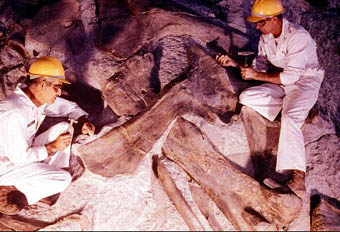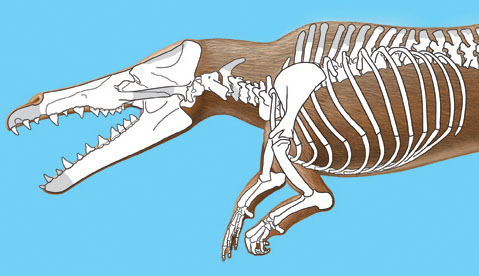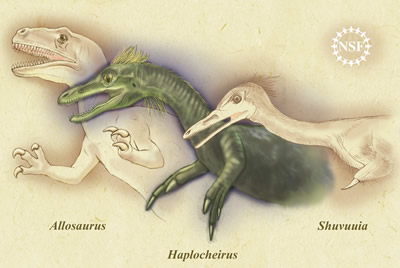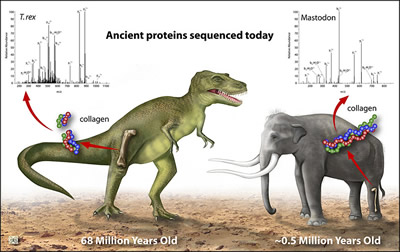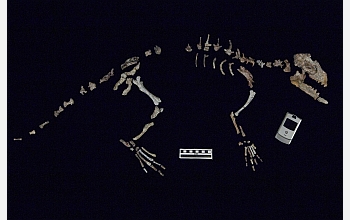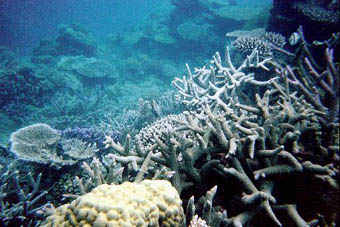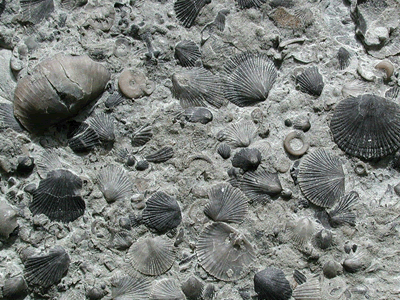Click on image for full size
Courtesy of Dinosaur National Monument
Related links:
Missing Link Between Whales and Four-Footed Ancestors Discovered
Did Life First Form in a Mica Sandwich at the Bottom of an Ancient Sea?
Fossil Record Suggests Insect Assaults Foliage May Increase with Warming Globe
Geologic Findings Undermine Theories of Permian Mass Extinction Timing
What Is a Fossil?
Fossils are evidence of what life was like long ago. The oldest fossils are over three billion years old and the youngest fossils are about 10,000 years old.
Scientists that study fossils know that creatures that lived at different times in past were different. Most fossils are from creatures that no longer live on the planet because they have become extinct. Many of the extinct ones are somewhat similar to creatures that live today.
It takes special conditions for a fossil to form. Hard parts made of mineral, like shells and bones, are more likely to become fossils. Soft parts, like skin, organs, and eyes, usually don�t become fossils.
Trace fossils are clues that show how animals lived. For instance, if you were to make footprints on the beach today and the beach sand eventually became a sedimentary rocks, your footprints would be trace fossils in the rock. This doesn�t happen very often. Think about all the people, dogs, crabs, birds and other animals that walk over a beach each day. Few, if any, of those footprints will become fossils someday. Most of them are washed away by wind and waves.


